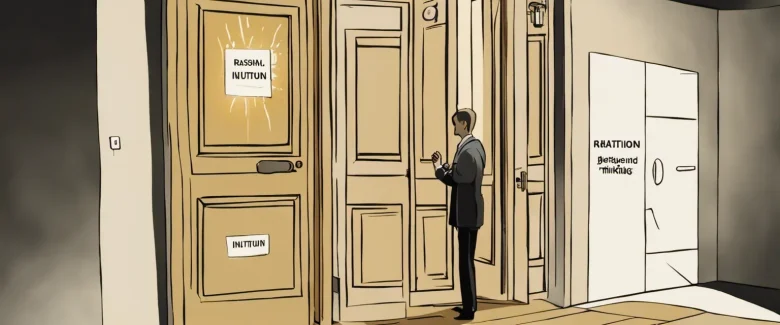In “Tiny Habits,” Dr. B.J. Fogg reveals a groundbreaking approach to behavioral change that simplifies the process of creating new habits. By focusing on tiny, achievable actions, rather than relying on willpower or motivation, anyone can effectively transform their lives. Dr. Fogg, a renowned behavior scientist and director of the Behavior Design Lab at Stanford University, has dedicated his career to understanding human behavior and finding practical solutions for personal transformation. With his expertise and years of research, he presents a powerful blueprint for creating lasting change in our lives, one small habit at a time.
Chapter 1: Introduction to Tiny Habits
Chapter 1 of “Tiny Habits: The Small Changes that Change Everything” by Dr. B.J. Fogg introduces the concept of tiny habits and explains their significance in achieving long-term behavioral changes. Fogg believes that small adjustments have a greater chance of success compared to big, drastic ones.
The chapter starts by highlighting the common challenges people face when trying to make positive changes in their lives. Typical approaches often involve setting ambitious goals or relying on willpower, but they often fail to produce lasting results. Fogg argues that this failure is due to people underestimating the role of habits in daily life and instead focusing on motivation and ability alone.
Fogg then presents his theory around behavior formation, which states that motivation, ability, and prompts are essential components for any habit to occur. Motivation simply refers to the desire to perform a behavior, while ability represents the ease with which a behavior can be performed. Prompts act as cues or reminders to initiate the behavior.
The concept of Tiny Habits is introduced as a solution to implementing lasting change without relying on motivation or willpower. The key idea is that starting with small, manageable behaviors makes it easier to establish habits. Dr. Fogg suggests that habits should be connected to existing routines in one’s life to increase their chance of success.
The chapter concludes by emphasizing the importance of celebrating after completing a tiny habit, as positive reinforcement facilitates habit formation. Fogg uses personal anecdotes and stories from his research to illustrate the effectiveness of tiny habits, building anticipation for the practical steps and implementation strategies that will be explored in the following chapters.
Chapter 2: Understanding Behavior Design
Chapter 2 of “Tiny Habits: The Small Changes That Change Everything” by Dr. B.J. Fogg is titled “Understanding Behavior Design.” In this chapter, Fogg introduces the concept of Behavior Design, which is a systematic approach to creating habits and behavior change.
Fogg begins by explaining that in order to create successful habits, we need to understand three elements: motivation, ability, and prompts. Motivation refers to our desire or willingness to perform a behavior; ability relates to how easy or difficult the behavior is to perform; and prompts are triggers that remind us to perform the behavior.
Motivation can be categorized into three types: sensation, anticipation, and social cohesion. Sensation refers to immediate gratification or pleasure obtained from a behavior, anticipation involves the hope for future rewards or benefits, and social cohesion is driven by our need for acceptance and connection with others.
Ability is crucial in behavior design, as the easier a behavior is to perform, the more likely we are to engage in it. Fogg explains that we can increase ability by making behaviors simpler or by breaking them down into smaller steps. For example, if we want to start a habit of flossing our teeth, we can start by flossing just one tooth initially, making it extremely easy to achieve.
Prompts act as reminders to perform a behavior. Fogg discusses different types of prompts, including signals from the environment, people, or ourselves. He emphasizes the importance of choosing effective prompts tailored to each individual and aligning them with existing routines.
Fogg also introduces the concept of “swarming,” where multiple prompts are used together to increase the likelihood of behavior adoption. For example, to encourage flossing, one can place the floss on the bathroom counter (environmental prompt), set a reminder on their phone (self-prompt), and inform their partner about their intention (social prompt).
In summary, understanding Behavior Design involves considering motivation, ability, and prompts. By identifying the right mix of these elements, we can make habits easier to adopt and increase the chances of successful behavior change.
Chapter 3: The Fogg Behavior Model
Chapter 3 of the book “Tiny Habits” by Dr. B.J. Fogg introduces the Fogg Behavior Model, a framework for understanding human behavior and how to create lasting habits. The model consists of three elements: motivation, ability, and prompts.
Motivation refers to the desire or willingness to perform a behavior. According to Fogg, motivation can fluctuate and is influenced by a person’s emotions, beliefs, and personal values. He emphasizes that motivation is not a reliable factor for creating habits as it can vary greatly from person to person.
Ability represents the individual’s capability to perform a behavior. Fogg explains that a behavior can only become a habit if it is easy to do. The simpler a behavior is, the higher the chances of it becoming a habit. By breaking down habits into small, manageable steps, individuals can increase their ability to perform the behavior consistently.
Prompts are triggers or cues that remind and initiate the behavior. Fogg stresses the importance of using effective prompts to strengthen habits. Using existing habits as prompts can be highly effective because people are more likely to remember and follow through with a behavior when it is associated with an established routine. Additionally, external prompts like alarms, notifications, or visual cues can also be beneficial in reminding individuals to perform their desired behavior.
Fogg also introduces the concept of “behavior design,” which involves intentionally designing prompts and increasing abilities to create new habits. By effectively pairing motivation with an ability and using prompts strategically, individuals can increase the likelihood of habit formation.
The Fogg Behavior Model provides a practical framework for understanding and creating habits by addressing the key elements of motivation, ability, and prompts. By focusing on creating habits that are easy to do and leveraging prompts effectively, individuals can successfully build new habits and make positive changes in their lives.
Chapter 4: How to Create Tiny Habits

Chapter 4 of “Tiny Habits” by Dr. B.J. Fogg focuses on how to create tiny habits. The chapter delves into the specifics of designing and implementing small behaviors that are easy to integrate into daily life and can lead to significant changes over time.
The chapter starts by explaining the concept of “recipes,” which are specific instructions for creating tiny habits. Recipes consist of three elements: an anchor moment, a new tiny behavior, and immediate celebration. The anchor moment is an existing routine or event that will trigger the new habit. The new behavior should be small and easily achievable, taking no more than 30 seconds to complete. Lastly, immediate celebration helps reinforce the habit and associate it with positive emotions.
Dr. Fogg emphasizes the importance of experimenting with different recipes to find what works best for each individual. He recommends starting with simple and enjoyable habits to increase the likelihood of success and motivation. It is also advised to have multiple recipes for different anchor moments throughout the day, utilizing existing routines like waking up, going to the bathroom, or commuting.
Furthermore, the chapter highlights the effectiveness of celebrating immediately after completing the tiny behavior. Celebration can take various forms, such as saying “good job” to oneself or performing a small physical gesture. Dr. Fogg explains that the key is to associate positive emotions with the new habit, reinforcing the behavior and increasing the chances of repetition.
In summary, Chapter 4 provides a framework for designing tiny habits through the use of recipes. It emphasizes the importance of simplicity, enjoyment, experimentation, and immediate celebration to successfully integrate these habits into one’s daily routine. By following this approach, individuals can create lasting behavioral changes that contribute to personal growth and achievement.
Chapter 5: Celebrating Success and Harnessing Emotions
Chapter 5 of “Tiny Habits” by Dr. B.J. Fogg is titled “Celebrating Success and Harnessing Emotions.” This chapter dives into the crucial role that emotions play in creating and maintaining habits, as well as the importance of celebrating your successes.
Dr. Fogg explains that emotions are the driving force behind our behavior, and in order to establish and sustain habits, we need to tap into positive emotions. He introduces the concept of an “emotional anchor,” which is a particular action or cue that triggers a positive emotion. By associating positive emotions with tiny habits, we can make them more enjoyable and increase our chances of sticking to them.
The chapter emphasizes the significance of celebrating every small win along the way. Dr. Fogg argues that we often overlook celebrating successes, especially when it comes to tiny habits. However, celebrating achievements generates positive emotions, which in turn reinforces the behavior and makes it more likely to become a long-term habit.
Dr. Fogg provides various suggestions on how to celebrate success effectively. One method involves mentally acknowledging your accomplishment, whether through thoughts or self-affirmations. Another approach is using physical gestures like pumping your fist or saying “Yes!” out loud. You can also reward yourself with something you enjoy, such as a healthy treat or a few minutes of relaxation.
The chapter emphasizes the importance of celebrating every success, no matter how small, as this builds a positive association with the habit. Dr. Fogg emphasizes that emotions are the key to successful habit formation and that by harnessing positive emotions through celebration, we can make our habits more enjoyable and sustainable.
Chapter 6: Overcoming Obstacles and Adjusting Habits
Chapter 6 of “Tiny Habits: The Small Changes That Change Everything” by Dr. B.J. Fogg addresses the importance of overcoming obstacles and adjusting habits to create lasting change in our lives. Fogg explains that obstacles often prevent people from forming new habits or sticking to existing ones. However, by understanding how to navigate these obstacles and make necessary adjustments, individuals can increase their chances of success.
Fogg introduces the “ABCs of Habit Formation,” which stands for “Anchor, Behavior, and Celebration.” An anchor is an existing routine or habit that can serve as a prompt for a new behavior. By linking the desired behavior to an existing habit, it becomes easier to remember and implement the new habit.
When it comes to dealing with obstacles, Fogg encourages individuals to identify the specific hindrances that are preventing them from following through with their habits. He advises breaking down the obstacle into smaller parts and adjusting the habit to accommodate these barriers. This approach helps make the habit more attainable and increases the likelihood of success.
Additionally, Fogg emphasizes the importance of celebrating small wins to reinforce new habits. Celebrations can be as simple as giving oneself a pat on the back or mentally acknowledging the accomplishment. By associating positive emotions with the habit, individuals are more motivated to continue engaging in it.
Fogg also provides guidance on habit stability and the concept of “fogginess.” Habits become more stable over time, requiring less conscious deliberation. Fogg notes that habits should feel automatic and effortless. To achieve this, he suggests adjusting habits until they become “foggy” in one’s mind, meaning that they occur naturally without conscious effort or reminders.
Overall, Chapter 6 stresses the importance of identifying and overcoming obstacles while making necessary adjustments to habits. By incorporating these strategies, individuals can increase their chances of success in forming and maintaining their desired habits.
Chapter 7: Troubleshooting and Fine-tuning Habits
Chapter 7 of “Tiny Habits” by Dr. B.J. Fogg discusses troubleshooting and fine-tuning habits. In this chapter, Fogg focuses on overcoming obstacles and challenges that may arise during the process of habit formation.
Fogg introduces the concept of “diamond habits” that represent durable, long-lasting habits that can withstand the test of time. He explains that troubleshooting habits involves identifying points of failure and designing strategies to overcome them. Fogg highlights the importance of persistence, resilience, and adaptability in successfully forming habits.
One key aspect discussed in this chapter is the identification of specific habit breakdowns or what Fogg refers to as “failure points”. These can include triggers that don’t work, actions not taken, or lack of motivation. Fogg encourages individuals to explore why these failure points occur and offers practical solutions to address them. This may involve modifying the environment, simplifying the desired action, or identifying alternative triggers.
Additionally, Fogg suggests taking a personal approach to fine-tuning habits by reviewing behavior patterns and adjusting accordingly. He emphasizes the need to be flexible and adaptive, willing to experiment and make modifications as necessary. Fogg also provides helpful tips on how to maintain motivation and celebrate small wins to sustain long-term habit success.
Overall, Chapter 7 of “Tiny Habits” focuses on troubleshooting and refining habits through the identification of failure points, adaptation, and persistence. By consciously recognizing and addressing obstructions, individuals can overcome challenges and establish lasting habits that positively impact their lives.

Chapter 8: Expanding and Transforming Your Life with Tiny Habits
Chapter 8 of “Tiny Habits” by Dr. B.J. Fogg focuses on expanding and transforming one’s life using the concept of tiny habits. The chapter begins by emphasizing that tiny habits are not limited to achieving small, incremental changes. Instead, they can serve as a foundation for expanding and transforming one’s life in profound ways.
Dr. Fogg introduces the idea of a “Tiny Habits Recipe” as a framework for creating effective habits. This recipe consists of three simple steps: (1) choose a habit that you already do, (2) find a prompt that will reliably remind you to do the habit, and (3) celebrate your success. By using this recipe, individuals can create habits that lead to significant and lasting change.
One key aspect of implementing tiny habits is recognizing the concept of “anchors.” Anchors are existing habits or routines that can serve as triggers for new habits. By attaching new habits to existing anchors, individuals can leverage their existing routines to make tiny habits stick.
Dr. Fogg also explores the idea of transformational habits, which are tiny habits that impact how individuals see themselves. These habits help people develop new identities and values that align with their desired lifestyle. He provides examples of transformational habits such as declaring “I’m an athlete,” “I’m a writer,” or “I’m a healthy person,” and developing corresponding tiny habits that reinforce these identities.
Furthermore, the chapter delves into strategies for increasing motivation and maintaining habit consistency. Dr. Fogg emphasizes the importance of celebrating even the smallest successes and reframing setbacks as temporary rather than permanent failures.
Overall, Chapter 8 of “Tiny Habits” explores the potential of tiny habits to not only expand and transform one’s life but also cultivate new identities aligned with personal aspirations. By incorporating the principles of the Tiny Habits Recipe and acknowledging the power of anchors, individuals can make lasting changes and achieve their desired transformations.
After Reading
In conclusion, “Tiny Habits” by Dr. B.J. Fogg offers a transformative approach to behavior change by focusing on small and achievable habits. The book emphasizes the power of simplicity, consistency, and celebration in creating lasting change in our lives. Dr. Fogg’s framework of identifying and implementing tiny habits in our routines empowers readers to break through barriers and develop positive behaviors without feeling overwhelmed or discouraged. By applying the principles outlined in this book, individuals can create a ripple effect of positive change that ultimately leads to significant personal growth and improved wellbeing. With its practical strategies and inspiring anecdotes, “Tiny Habits” serves as a valuable guide for anyone seeking to make sustainable changes in their lives.
1. Man’s Search for Meaning” by Viktor E. Frankl – In this incredibly moving and thought-provoking memoir, Frankl, a renowned psychiatrist, shares his experiences as a Holocaust survivor and explores the importance of finding meaning in life, even in the face of adversity.
2. Sapiens: A Brief History of Humankind” by Yuval Noah Harari – Harari takes readers on an extraordinary journey through the history of Homo sapiens, from the early stages of evolution to the modern age. This captivating exploration of our species delves into anthropology, sociology, biology, and more, while provoking us to question our understanding of what it means to be human.
3. The Alchemist” by Paulo Coelho – A timeless tale of self-discovery and following our dreams, “The Alchemist” follows Santiago, a young shepherd who embarks on a journey across the desert in search of a hidden treasure. This enchanting novel encourages readers to listen to their hearts, pursue their passions, and embrace the unknown.
4. Quiet: The Power of Introverts in a World That Can’t Stop Talking” by Susan Cain – Through extensive research and storytelling, Cain explores the power of introverts, challenging the cultural bias towards extroversion. With thought-provoking insights and practical advice, this empowering read celebrates the quiet strength and unique contributions of introverts in an increasingly noisy world.
5. The Happiness Advantage: The Seven Principles of Positive Psychology That Fuel Success and Performance at Work” by Shawn Achor – Utilizing the principles of positive psychology, Achor challenges the conventional belief that success brings happiness, instead emphasizing the profound impact happiness has on our ability to achieve success. Packed with practical strategies, this book offers a roadmap for cultivating a more positive mindset and enhancing overall well-being.



